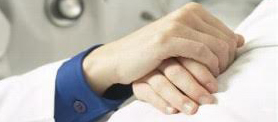Living with your device
Overview
After the implantation of your device, ask your physician any questions you may have. Make sure to take your medications as instructed. Please consult your physician immediately if your device elicits any beeps or vibrations as this can signal issues with your battery or leads. Make sure to carry your device identification card at all times and update your physicians, dentists, and emergency personnel of your device implant. You will be given a temporary card on discharge from the hospital, with mailing of the permanent with 6-8 weeks thereafter.
Follow-up visits
Your physician will schedule routine regular follow-up visits for device checks. Even if you are feeling well, your device needs to be “interrogated” at routine intervals to ensure appropriate device functioning and to optimize programming parameters. This entails a “device clinic” check typically every 4-6 months for a pacemaker system, and every 3-4 months for an ICD. The “device check” takes approximately 20 minutes, with the programmer “wand” placed on your chest over your device. A noninvasive review of your device parameters, function, and cardiac events will be printed and kept with your records. Replacement of the pacemaker or ICD generator (battery) is performed at time of the elective replacement interval determined by the device’s battery life. Expect a 5 to 8 year average generator life for a pacemaker and a 3 to 6 year life span for a defibrillator system. An intensified monitoring period will be instituted as battery depletion is detected. This is determined during your routine device checks as residual battery level can be projected. The frequency of “device clinic” checks will change to every 2-3 months or less thereafter.
Battery depletion and device replacement
Your physician will monitor your battery longevity with each ensuing “device clinic” check. Once it is determined you have fallen into the “elective replacement index” (ERI) of the device’s battery, your physician will schedule you for a generator change. The device battery is intimately associated with the generator such that battery replacement requires a completely new device generator. This is typically an outpatient procedure, performed in the EP lab under sterile conditions. After the device generator is disconnected from the intracardiac leads, the integrity of the leads will be confirmed intraoperatively, and then they will be connected to a new generator. The incision site care instructions will be the same as with a fresh new implant, except that the leads are safely positioned and you can resume normal activity within a week.
Important Facts
- Your device has built-in features to protect it from interference produced by most household electrical appliances. Generally microwave ovens, computers, VCRs, and garage door openers are all safe to use.
- Airport walk-through metal detectors are safe, but you may set the alarm off. Always have your device identification card on hand, and have them perform a hand search instead.
Precautions
- Be wary of contact sports
- Avoid placing your cellular phone directly over your pacemaker generator. Try to keep it at least 6 inches away from your device. Do not carry your cellular phone in your shirt pocket when not in use.
- Magnetic resonance imaging (MRI) scans should be avoided unless your physician deems otherwise
- Avoid prolonged exposure in the vicinity to electronic security systems (anti-theft devices), including metal-detector “wands” and those located at the entrance of department stores.
- Your device is sensitive to strong “electromagnetic interference” (EMI) generated by certain electric or magnetic fields of sufficient strength. Hence, avoid working near heavy or high-voltage machinery (running motors and alternators), exposure to arc-welding equipment, CB radio antennas, and MRI scans.
Device Company Manufacturers
Medtronic: 800-551-5544
Boston Scientific: 800-227-3422
St. Jude Medical: 800-777-2237/800-733-3455
Biotronik: 800-547-0394/503-635-3594
PDF download of these instructions
Please consult your physician for any individual changes or additions.





 Silver Spring Office
Silver Spring Office  DC Office (at Providence Hospital)
DC Office (at Providence Hospital)  Hagerstown Office
Hagerstown Office